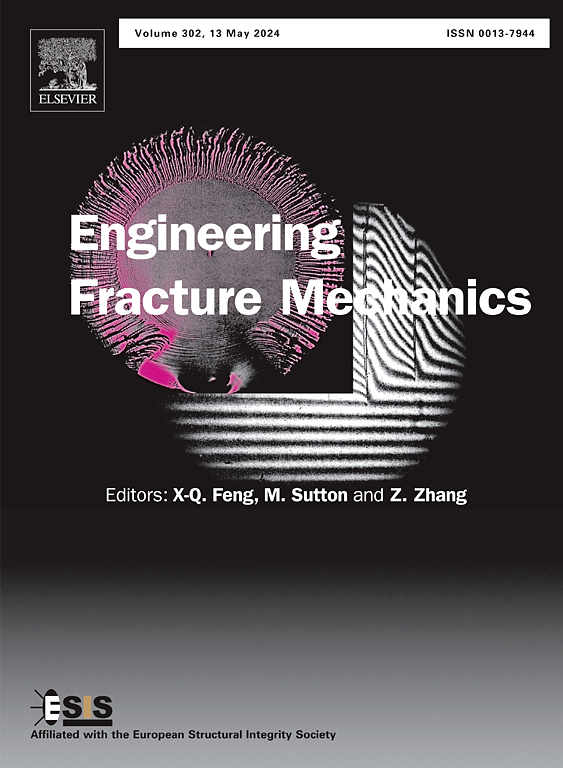Analysis of strain rate effect on fatigue crack of fixed frog nose rail
IF 4.7
2区 工程技术
Q1 MECHANICS
引用次数: 0
Abstract
As a wheel traverses a fixed frog, it creates significant wheel-rail interaction, potentially causing fatigue cracks. The frog’s mechanical properties vary under wheel impact, making it crucial to consider the strain rate effect on frog materials when studying rolling contact fatigue. This study employs an explicit finite element method to develop a 3D transient rolling contact model of the wheel-frog system. The model captures the stress–strain state as the wheel traverses the frog. Quasi-static and impact compression tests are conducted on the nose rail material, and a dynamic constitutive model is established using the Johnson-Cook model. The J-S multiaxial fatigue damage prediction model is used to analyze the initiation location and angle of fatigue cracks in key cross-sections of the nose rail. The findings indicate that: The strain rate of the nose rail increases sharply under wheel impact but decreases to match that of the wing rail once the wheel load transition is complete; The U26Mn2Si2CrNiMo nose rail material shows significant strain rate effects, with yield strength increasing with strain rate, and the Johnson-Cook model effectively describes these effects; The strain rate effect significantly impacts effective stress and plastic strain, with maximum effective stress increasing and maximum plastic strain decreasing in areas with higher strain rates; While strain rate effects minimally impact the initiation location and angle of fatigue cracks in the longitudinal direction of the nose rail, they do influence the angle of sub-surface crack initiation in the rail. These results provide realistic and reliable strain rate-related mechanical parameters for simulating the dynamic contact behavior of the fixed frogs and offer guidance for their maintenance and repair.
求助全文
约1分钟内获得全文
求助全文
来源期刊
CiteScore
8.70
自引率
13.00%
发文量
606
审稿时长
74 days
期刊介绍:
EFM covers a broad range of topics in fracture mechanics to be of interest and use to both researchers and practitioners. Contributions are welcome which address the fracture behavior of conventional engineering material systems as well as newly emerging material systems. Contributions on developments in the areas of mechanics and materials science strongly related to fracture mechanics are also welcome. Papers on fatigue are welcome if they treat the fatigue process using the methods of fracture mechanics.

 求助内容:
求助内容: 应助结果提醒方式:
应助结果提醒方式:


